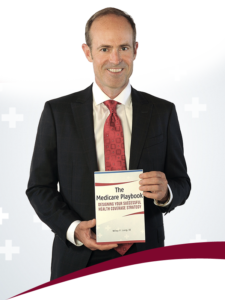| November 2023 | MediGap Advisors Health & Wealth Newsletter | Vol. 19, Issue 11 |
How To Get the Most Out of Your Medicare Part D Prescription Drug Plan
Even if you have a Medicare Part D plan to help you pay for your prescription drugs, you could still face significant out-of-pocket costs in the form of deductibles and copays.
In this newsletter, we’ll explore several strategies to help you maximize your Part D coverage, minimize out-of-pocket expenses, and make the most informed decisions about your prescription medications.
These tips will work whether you have a standalone Part D plan or a Medicare Advantage plan with prescription drug benefits included.
Let’s dive right in!
1. Ask About Generics.
Generic medications are just as effective as their brand-name counterparts – and available at just a small fraction of the cost.
Your healthcare provider can help identify suitable generic options, allowing you to save without compromising the quality of your treatment. Your pharmacist can also help, too, though he or she may have to send a message back to your physician asking for a new prescription for the generic medication.
2. Opt for 90-Day Supplies
Ask for a 90-day supply of any long-term medication.
Many Part D plans offer lower co-pays for extended supplies, which can translate to substantial savings over the course of a year. This approach also reduces the frequency of refills and trips to the pharmacy,
Note: Some medications have expiration dates. So keep this in mind, and ask your pharmacist about the shelf-life of any medication.
3. Utilize Online and Mail Order Pharmacies
Online and mail order pharmacies often provide prescription medications at lower prices than brick-and-mortar pharmacies.
Many Part D plans have partnered with specific mail order pharmacies to offer cost-effective solutions. They’ll be delivered right to your door in discreet packaging.
Check with your plan to explore the options available to you.
4. Explore Drug Discount Plans
Consider exploring drug discount plans or prescription savings programs. Some organizations and pharmacies offer discount cards that can provide additional cost reductions on both brand-name and generic medications.
While these discounts may not apply to every drug, they can offer significant savings on eligible prescriptions. A lot of time costs will be less than your copay!
Note: Using discount cards may mean your purchase doesn’t count towards your Part D deductible.
5. Investigate Patient Assistance Programs
Patient assistance programs are designed to help individuals with limited income and resources access necessary medications.
These programs, often offered by pharmaceutical companies, can provide free or low-cost prescription medications to eligible individuals.
Research whether any of your medications qualify for such programs, as they can offer substantial relief for out-of-pocket expenses.
6. Ask Your Doctor for Samples
Pharmaceutical sales reps often leave sample medications with doctor’s offices.
This not only gives you a chance to see if a medication is effective before you buy a full 90-day supply of it, while reducing your immediate expenses.
Just say “do you happen to have any sample doses?”
7. Compare Pharmacies for the Best Price
Shop around.
Prices for the same medication can vary between different pharmacies. Shopping around can lead to significant savings.
Online tools and mobile apps can help you compare prices and locate the most cost-effective pharmacy near you.
You should also shop around among several different drug discount programs as well as pharmacies.
8. Review Your Medications Regularly
Regularly reviewing your medication list with your healthcare provider can help identify opportunities to reduce your prescription drug costs by eliminating unnecessary medications.
9. Apply for Extra Help
If you have limited income and resources, you may apply for the Extra Help program, also known as the Low-Income Subsidy (LIS).
This federal program assists with prescription drug costs, including premiums, deductibles, and co-pays.
Enrolling in a Medicare Savings Program (MSP) automatically qualifies you for the Extra Help program.
Some states offer State Pharmaceutical Assistance Programs (SPAPs) that can help lower-income individuals with Medicare cover their prescription drug costs. These programs vary by state, so check with your local Medicare office for details.
10. Stay Informed About Plan Changes
Review your plan’s formulary and coverage documents. Part D plans can change their formulary (list of covered drugs) and cost-sharing structures annually.
You’ll get a letter –called the Annual Notice of Change letter – from your plan every September. It will detail any changes to your coverage and premiums for the following year.
Review the Annual Notice of Change provided by your plan each fall and, if necessary, explore other Part D options during the Medicare Open Enrollment period.
Conclusion
As we navigate these evolving Medicare landscapes together, please know that MediGap Advisors is here to support you every step of the way.
Thank you for choosing us as your trusted Medicare partner. If you have any questions or need assistance during this open enrollment period, please don’t hesitate to reach out.
Here’s to your health and wealth,


Wiley P. Long, III
President – MediGap Advisors
Comfort at Life’s End: A Medicare Hospice Guide

